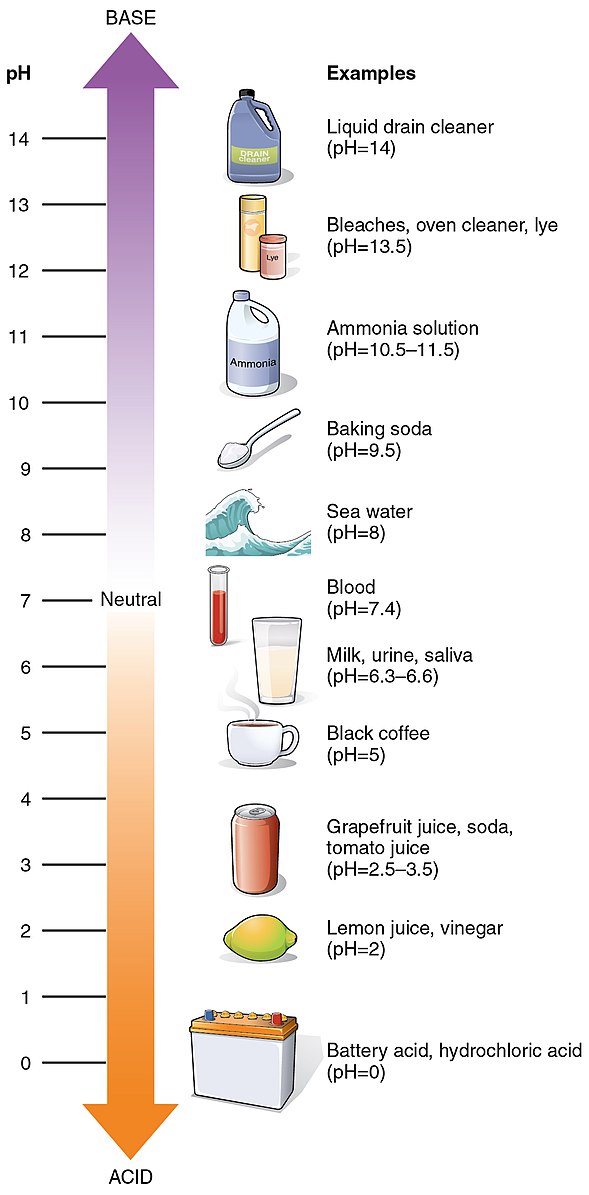The pH value of sulfuric acid (H2SO4) in water is not a fixed quantity, as it depends on the concentration of the acid in the solution. Sulfuric acid is a strong diprotic acid, meaning it can donate two protons (hydrogen ions) in water. The pH of a sulfuric acid solution is calculated using the acid dissociation constants, K1 and K2, associated with each stage of dissociation.
Understanding the Dissociation of Sulfuric Acid
For a 0.10-M sulfuric acid solution, the pH can be calculated using the formula pH = -log[H+], where [H+] is the hydrogen ion concentration. However, since sulfuric acid is a diprotic acid, there are two stages of dissociation, each with its own acid dissociation constant, K1 and K2.
The first stage of dissociation is assumed to go to completion due to the large value of K1, resulting in the formation of hydronium ions (H3O+) and bisulfate ions (HSO4-). The second stage of dissociation involves the reaction between bisulfate ions and water, forming more hydronium ions and sulfate ions (SO42-).
To calculate the pH of a sulfuric acid solution accurately, the quadratic equation must be solved, taking into account both stages of dissociation and their respective acid dissociation constants.
Adjusting the pH of Sulfuric Acid Solutions
 Image source: OpenStax College
Image source: OpenStax College
If you want to increase the pH of a sulfuric acid solution, you can add a base to neutralize the acid. However, keep in mind that adding a base will also produce salts, which may affect the pH of the solution.
When dealing with sulfuric acid, always use appropriate personal protective equipment, such as gloves and safety glasses, and handle it in a well-ventilated area. If you spill sulfuric acid, clean it up immediately using a suitable absorbent material and dispose of it properly.
To balance the pH of a sulfuric acid solution, you can add a base, such as sodium hydroxide (NaOH) or potassium hydroxide (KOH), in small increments until the desired pH is reached. Measure the pH using a pH meter or pH indicator strips to ensure accuracy.
Contaminants and Impurities in Sulfuric Acid Solutions
Regarding contaminants and chemicals present in sulfuric acid solutions, it is essential to consider the impurities and byproducts resulting from its production and handling. Common impurities in sulfuric acid include heavy metals, such as lead, mercury, and arsenic, and organic compounds, such as phenols and formaldehyde.
To deal with these impurities, you can use various purification methods, such as distillation, ion exchange, or reverse osmosis, to remove unwanted substances from the sulfuric acid solution. Always follow safety guidelines and regulations when handling and disposing of sulfuric acid and its byproducts.
Conclusion
In summary, the pH of a sulfuric acid (H2SO4) solution in water is a complex topic that requires understanding the dissociation of the acid and the associated acid dissociation constants. Adjusting the pH of a sulfuric acid solution can be done by adding a base, but it’s essential to consider the formation of salts and the potential presence of contaminants. Proper safety measures and purification techniques are crucial when working with sulfuric acid solutions.
References:
– Reddit post on increasing the pH of 18 M sulfuric acid
– YouTube video on the pH of sulfuric acid
– Explanation of polyprotic acids
– Chemistry Stack Exchange question on the pH of a sulfuric acid solution
– Byjus article on the pH value of sulfuric acid
